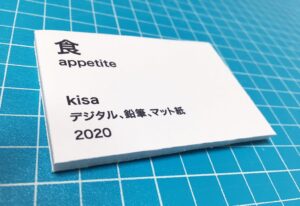Meet and Greet Origami Art

Summary
This toolkit uses origami, a traditional Japanese cultural medium, to create artworks.
Learners will start by making cranes, which contain many of the basic forms of origami, and then apply them to make models of contemporary Japanese artworks using origami. By reinterpreting contemporary Japanese art in their own way and reflecting it in origami, learners gain an understanding of Japanese culture and new creativity.
This toolkit uses origami, a traditional Japanese cultural medium, to create artworks.
Creation in origami relies largely on a few existing basic forms.
The basic form of the crane is the one used in the process of folding origami cranes, but the basic form of the crane is also used to fold birds, to fold animals, and to fold flowers.
For this reason, this toolkit first teaches learners how to fold ‘origami cranes’, including the basic form of origami. The idea is then used to select a piece of Japanese contemporary artwork of the learner’s choice and reinterpret it in origami to create a model of the work.
Traditional/contemporary culture, art and origami:
Origami has become a common activity in traditional Japanese culture, taught to children from an early age. Origami also builds on traditional art forms and modernises them for use in the world today.
Origami’s two- and three-dimensional elements add remarkable texture and detail to ordinary projects such as buildings, furniture, fashion and accessories.
Moreover, origami is a medium that is widely used in contemporary art and has been gaining popularity in Europe and the US in recent years. Thus, the associations and reinterpretations in the toolkit between contemporary Japanese art and origami can help to continue and renew interest in traditional Japanese culture.
In this way, the toolkit contributes to contemporary art and gives the learner ideas for future work.
There are 4 steps:
-
Step 1: Fold Origami Cranes (8mins)

Folded by people from around the world, these strands of 1,000 paper cranes surround the Children’s Peace Monument and can be found throughout the Peace Park in Hiroshima, Japan. Photo by David Janes.
Use the following video to fold paper cranes:
-
-
-
-
Fold it into a triangle Video 1
-
Spread out the pouch and fold it into a rectangle as if squashing it Video 2
-
Fold the edge of the rectangle inwards to meet the centre of the rectangle Video 3
-
Fold inwards along the crease line, spreading and squashing it inwards Video 4
-
Fold inwards to meet the centre Video 5
-
Finishing touches Video 6
-
-
-
Full Video: https://media.ed.ac.uk/media/Open+Toolkit+Video/1_ttuarcia
-
Step 2: Create a model of Japanese Contemporary Artwork in Origami (8 mins)

Pumpkin by Yayoi Kusama, restored (production = 2022) Bijutsu Techo. https://bijutsutecho.com/magazine/insight/16088/pictures/1
Make your own reinterpreted origami models with references to contemporary Japanese artworks.

A screenshot of Google page, Photo by the author.
These are examples of websites where you can find contemporary Japanese artworks that can be used as references in origami creation:
– Tokyo Museum Collection (Integrated database search for metropolitan museums)
you can select specific museums such as the Museum of Contemporary Art Tokyo when you search an artwork that you reference in origami creation https://museumcollection.tokyo/en/
– Mori Art Museum https://www.mori.art.museum/en/collection/index.html
– 21st Century Museum of Contemporary Art, Kanagawa https://jmapps.ne.jp/kanazawa21_2/sakka_list.html
-
Step 3: Give it a name (2mins)

https://kisa.ne.jp/design/caption-board/
Once created, write the name of the work you referred to and your origami artwork on a piece of paper and display it in the exhibition area.
-
Step 4: Impression (2mins)

https://www.cross-m.co.jp/column/marketing/mkc20230317/
Please fill in the form below with your feedback on this toolkit.
It will be used to reflect on the future development of the Open Learning Toolkit. https://docs.google.com/forms/d/e/1FAIpQLSf72Npv7QRfXjWlTdjMLsQwBQnD-pYwD_FTxORFAjgjJF6yeA/viewform
2 replies to “Meet and Greet Origami Art”
Leave a reply
You must be logged in to post a comment.


Please set a featured image
Please change your ID s2496950 to your name
Remember to attribute all of the artists/authors and URL sources of the images. If they are not public domain, you must remove and replace them.